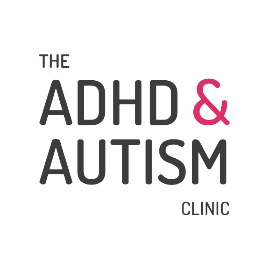Personalised Mindfulness Techniques to Improve Focus, Emotional Regulation, and Wellbeing for Neurodivergent Individuals
Mindfulness can significantly empower those with ADHD and autism by personalising techniques to their cognitive and sensory needs. From brief breathing exercises to sensory-friendly meditations, tailored mindfulness helps enhance focus, manage anxiety, and support emotional balance in neurodivergent individuals.

Why Mindfulness Matters for Neurodivergent Individuals
Attention Deficit Hyperactivity Disorder (ADHD) and autism spectrum conditions (ASC) share overlapping characteristics, such as challenges with attention, emotional regulation, and sensory processing. Individuals often experience heightened stress or anxiety, making daily tasks overwhelming. Mindfulness offers gentle, adaptable practices that help navigate these challenges with compassion and structure.
For professional support, visit our ADHD & Autism Services.
What Makes Mindfulness Different for ADHD and Autism?
Traditional mindfulness techniques typically involve extended periods of silence or inactivity, posing difficulties for those with ADHD or autism. Tailored mindfulness considers sensory sensitivities, attention spans, and the need for structured yet flexible routines. Techniques are adapted to maintain engagement, ensuring mindfulness is both accessible and beneficial.
Core Mindfulness Techniques Tailored to ADHD
Short and Engaging Practices
Brief mindfulness sessions lasting 2-5 minutes are particularly effective for individuals with ADHD, significantly reducing frustration and enhancing consistency.
Short, simple practices like focused breathing exercises or quick body scans help maintain engagement and ensure regular participation without overwhelming cognitive demands.
These concise activities can easily be integrated throughout the day, providing frequent mental resets that support improved focus, emotional regulation, and overall wellbeing.
Movement-Based Mindfulness
Movement-based mindfulness incorporates physical activity into mindfulness practice, effectively addressing the ADHD preference for movement and action.
Walking meditations are particularly beneficial; individuals can synchronise their steps with their breathing or focus on the sensation of their feet touching the ground.
Mindful stretching or yoga combines controlled movements with breath awareness, providing sensory input while calming the mind and reducing restlessness.
Dance-based mindfulness is another engaging activity, allowing expressive movement to music that helps individuals remain present and emotionally balanced.
These movement-driven practices transform excess energy into purposeful activity, enhancing focus and emotional regulation.
Visual and Auditory Anchors
Visual cues and auditory anchors significantly enhance mindfulness for individuals with ADHD by helping maintain attention. Visual anchors, such as calming images, tranquil patterns, or visual timers, gently guide attention without overwhelming the senses.
Auditory anchors, including gentle music, nature sounds, or timed chimes, offer structured sensory input that consistently redirects attention back to the present moment. These combined strategies create supportive, engaging mindfulness experiences.
Structured Mindfulness through Gamification
Timers, apps, and playful challenges significantly enhance motivation for mindfulness practices by making them engaging and interactive.
Timers provide clear boundaries and achievable time frames, reducing anxiety about prolonged practice and fostering a sense of accomplishment.
Mindfulness apps offer guided sessions, visual progress tracking, and customisable reminders, creating structured and personalised experiences that help users stay consistent.
Additionally, incorporating playful challenges such as earning points, achieving milestones, or engaging in friendly competitions can turn mindfulness into a stimulating and enjoyable activity, encouraging sustained participation and commitment.
Core Mindfulness Techniques Tailored to Autism
Sensory-Safe Environments
Creating calm, low-stimulation environments enhances comfort, allowing individuals with autism to engage mindfully without sensory overload.
Repetitive and Predictable Techniques
Activities like finger tracing, counting breaths, or pattern-based visualisations offer predictability, aiding relaxation and focus.
Mindful Breathing with Props
Visual aids or tactile tools, such as stress balls or textured objects, help anchor attention and reduce anxiety through sensory engagement.
Consistent Routines
Clearly structured mindfulness sessions, scheduled regularly, build familiarity, reducing anxiety around unpredictability.
Sensory-Safe Environments
Creating calm, low-stimulation environments enhances comfort, enabling individuals with autism to engage mindfully without sensory overload. Carefully controlling lighting, sound levels, and visual clutter can significantly reduce sensory stress and facilitate deeper relaxation and focus during mindfulness practices.
- Repetitive and Predictable Techniques: Structured, repetitive activities such as finger tracing, breath counting, or pattern-based visualisations provide predictability and familiarity.
- Mindful Breathing with Props: Utilising visual aids or tactile tools, such as stress balls, textured objects, or breathing cards, helps anchor attention and provides calming sensory input.
- Consistent Routines: Clearly structured mindfulness sessions scheduled at consistent intervals build familiarity, significantly reducing anxiety related to unpredictability.
Shared Techniques That Work Well for Both
Grounding Exercises
The 5-4-3-2-1 grounding technique uses the senses to anchor individuals firmly in the present. It involves naming five things you see, four things you feel, three things you hear, two things you smell, and one thing you taste. This detailed sensory engagement effectively manages anxiety and overstimulation for both ADHD and autism.
Guided Audio Meditations
Clear, structured language in guided meditations supports individuals, reducing cognitive load and enhancing relaxation. Selecting meditations specifically tailored to neurodivergent needs, with clear, slow-paced instructions, can significantly enhance effectiveness.
Breathing Exercises with Sensory Support
Pairing breathing exercises with visual or auditory prompts assists with maintaining focus and calmness. Techniques such as breathing in sync with visual animations or counting breaths alongside audio cues create multi-sensory engagement, aiding relaxation and improving mindfulness outcomes.
Mindfulness Through Creative Activities
Engaging in creative activities such as art, music, or nature walks provides sensory-rich mindfulness experiences beneficial to neurodiverse individuals. Art-based activities encourage expressive mindfulness, music facilitates auditory anchoring, and nature walks stimulate calm sensory exploration.
Integrating Mindfulness Into Daily Routines
Mindfulness practices should seamlessly integrate into everyday life to foster consistency without added pressure. Practical methods include:
- Morning routines: brief breathing exercises upon waking
- School/work intervals: short mindfulness breaks to regain focus
- Bedtime practices: gentle guided meditations for restful sleep
Technology such as mindfulness apps or timers can offer supportive reminders and structured guidance.
Supporting Children vs Adults in Mindfulness Practice
Mindfulness practices should align with developmental stages and individual preferences:
Children: playful, sensory-based, brief exercises integrated through games or activities.
Adults: structured, self-led routines that foster intrinsic motivation and self-regulation skills.
Collaboration with carers, educators, or therapists enhances consistency and effectiveness.
When to Seek Professional Guidance
Professional guidance becomes valuable if challenges persist, mindfulness feels overwhelming, or tailored support is required. Specialists in ADHD and autism can create personalised mindfulness programmes, adapting techniques specifically to individual needs and goals.
Explore tailored support via our dedicated ADHD & Autism Diagnosis Services.
Frequently Asked Questions (FAQs)
1. What mindfulness practices work best for ADHD?
Short, engaging practices and movement-based mindfulness help maintain attention and interest, making them ideal for individuals with ADHD.
2. Can mindfulness reduce anxiety in autism?
Yes, structured and sensory-friendly mindfulness practices can significantly reduce anxiety in individuals with autism by providing predictability and calming sensory stimulation.
3. How often should mindfulness be practised?
Consistent, short daily practices are generally more beneficial than infrequent, lengthy sessions, especially for neurodivergent individuals.
4. Are mindfulness apps effective for neurodiverse individuals?
Yes, mindfulness apps providing structured routines, reminders, and tailored content can significantly support practice consistency and effectiveness.
5. Can mindfulness practices be integrated into school settings?
Absolutely. Brief mindfulness exercises during school can help neurodiverse students manage stress, improve attention, and enhance emotional regulation throughout the school day.
6. Is mindfulness suitable for children diagnosed with autism or ADHD?
Yes, when mindfulness activities are adapted to children’s developmental stages, incorporating playfulness, visual supports, and sensory considerations, they become highly effective.
